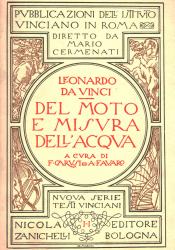Villa Arconati
The original da Vinci documents that Del moto e misura dell’acqua was based on are not known, but in all likelihood, they followed a similar path of ownership that the Codex Atlanticus followed (da Vinci and Richter). It was said that even while Leonardo was alive, his “...talent was so highly esteemed that any product of his extraordinary intellect and powers of invention… was treasured…” (Farago “Overview” 73). As soon as he died, there were feverish attempts by collectors, scholars, and aristocrats alike to own his writings. Commonly, collections fell into the hands of the most powerful members of society, such as Cardinals and Lords. This was the case when Leonardo manuscripts fell into the possession of Count Galeazzo Maria Arconati in Dairago, Italy (Farago “Overview” 82).
On paper, it might not seem logical for someone in a small northern Italian village to be able to obtain such coveted documents. However, although the town itself was not large, Dairago was very influential in Italy at the time (Past). The town was the home of the church of the archbishop of Milan, meaning its leaders were in control of large swaths of the northern territory. The Arconati family lived in a large medieval castle, named Villa Arconati, which was fixed with classic Roman marbles, a statue of Roman emperor Tiberius, fragments from the funeral monument of Gaston de Foix, and of course, Leonardo’s manuscripts (Past). This eye-popping concentration of priceless items is somewhat a testament to the wealth and resource disparity of the era.

A modern image of Villa Arconati (Villa)
Citations:
Da Vinci, Leonardo, and Jean Paul Richter. The Complete Notebooks of Leonardo Da Vinci. Eternal Sun Books, 2016, pp 372-390.
Farago, Claire J. An Overview of Leonardo's Career and Projects Until c. 1500. Garland, 1999, pp 73-82.
“Past & Future.” Villa Arconati, Fondazione Augusto Rancilio, www.villaarconati-far.it/eng/the-villa/past-e-future.aspx.
Image:
“Villa Arconati - FAR: Visits and Private Events - Italian Historic Houses.” Dimore Storiche Italiane, www.dimorestoricheitaliane.it/en/dimora/villa-arconati/.
Parent Map
Coordinates
Longitude: 9.096300000000

